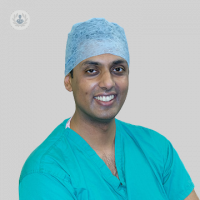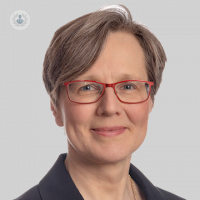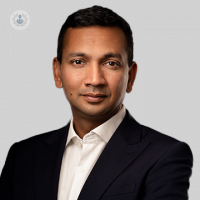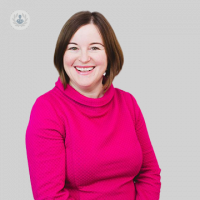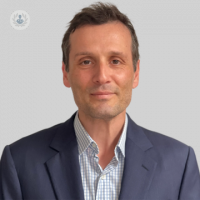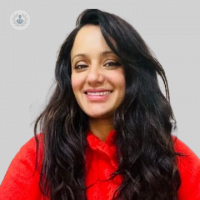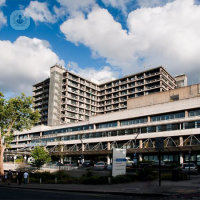What is a amblyopia?
Amblyopia, also known as a lazy eye, is a common sight disorder where vision is decreased, usually in one eye, but occasionally in both eyes. Glasses and contact lenses do not improve the vision. In amblyopia, the eye suffers reduced vision because the brain does not fully use the information coming from one or both eyes.
Amblyopia always begins in childhood and can only be corrected up to the age of 6-8 years. Later treatment can sometimes improve the vision slightly.
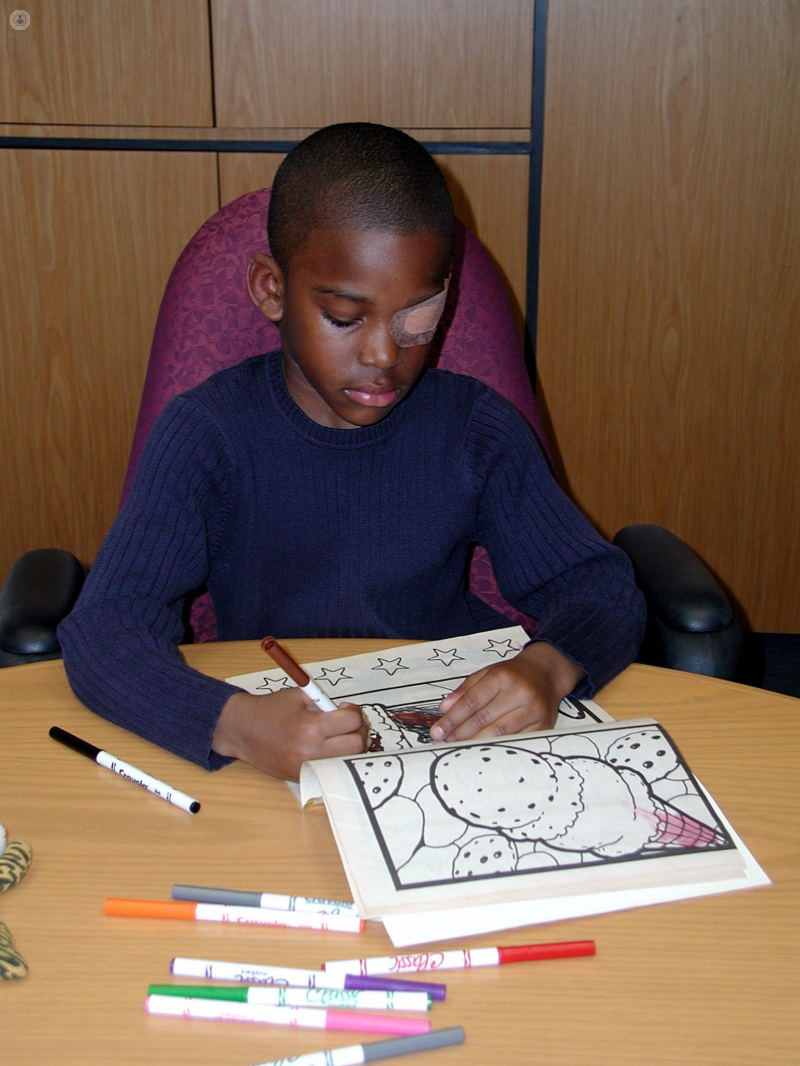
What are the symptoms of amblyopia?
Many children are unaware that there is a problem with their vision. If amblyopia is not detected during a screening programme, children often only become aware of the issue at the age of 10-15 years.
The two main symptoms of amblyopia are:
- a difference in glasses prescription between the two eyes
- a misalignment of the eyes (strabismus)
Rare symptoms can include defects in eye development, such as cataracts (clouding of the crystalline lens) from birth.
Causes of a lazy eye
When the vision in one eye is out of focus, the brain begins to prefer the eye that sends an image that is sharper and more focused. Over time, the brain allocates more space to processing information from the eye with sharper vision.
If the eyes are not aligned (strabismus), the brain begins to prefer and allocate more space to the eye that is usually straight.
In the rare case of cataracts, the image is very poor because of the cloudy lens, and the brain does not receive sufficient information to develop high resolution.
Can a lazy eye be prevented?
All children should have a vision assessment at the age of 4-5 years. In many areas, there is a school vision screening programme for reception class children. If the school does not take part in a screening programme, parents/carers should arrange a sight test for their child.
What is the treatment for amblyopia?
If the amblyopia is a result of an underlying cause such as a cataract, long-sightedness, short-sightedness, or astigmatism, this needs to be addressed first.
In the common form of amblyopia, this means treatment starts by wearing glasses to create a sharp and focused image in both eyes. The eyesight then needs to be checked by a professional every 2-4 months.
If glasses do not normalise the sight in the weaker eye, additional treatments are needed such as patching of the stronger eye for 2-6 hours per day, or blurring eyedrops for the stronger eye.
Treatment continues until the vision is optimal, and patching or drops can then gradually be reduced. Regular monitoring continues until the eyesight is stable without further treatment.
Amblyopia
Mr Imran Jawaid - Ophthalmology
Created on: 11-13-2012
Updated on: 01-19-2024
Edited by: Sophie Kennedy
What is a amblyopia?
Amblyopia, also known as a lazy eye, is a common sight disorder where vision is decreased, usually in one eye, but occasionally in both eyes. Glasses and contact lenses do not improve the vision. In amblyopia, the eye suffers reduced vision because the brain does not fully use the information coming from one or both eyes.
Amblyopia always begins in childhood and can only be corrected up to the age of 6-8 years. Later treatment can sometimes improve the vision slightly.

What are the symptoms of amblyopia?
Many children are unaware that there is a problem with their vision. If amblyopia is not detected during a screening programme, children often only become aware of the issue at the age of 10-15 years.
The two main symptoms of amblyopia are:
- a difference in glasses prescription between the two eyes
- a misalignment of the eyes (strabismus)
Rare symptoms can include defects in eye development, such as cataracts (clouding of the crystalline lens) from birth.
Causes of a lazy eye
When the vision in one eye is out of focus, the brain begins to prefer the eye that sends an image that is sharper and more focused. Over time, the brain allocates more space to processing information from the eye with sharper vision.
If the eyes are not aligned (strabismus), the brain begins to prefer and allocate more space to the eye that is usually straight.
In the rare case of cataracts, the image is very poor because of the cloudy lens, and the brain does not receive sufficient information to develop high resolution.
Can a lazy eye be prevented?
All children should have a vision assessment at the age of 4-5 years. In many areas, there is a school vision screening programme for reception class children. If the school does not take part in a screening programme, parents/carers should arrange a sight test for their child.
What is the treatment for amblyopia?
If the amblyopia is a result of an underlying cause such as a cataract, long-sightedness, short-sightedness, or astigmatism, this needs to be addressed first.
In the common form of amblyopia, this means treatment starts by wearing glasses to create a sharp and focused image in both eyes. The eyesight then needs to be checked by a professional every 2-4 months.
If glasses do not normalise the sight in the weaker eye, additional treatments are needed such as patching of the stronger eye for 2-6 hours per day, or blurring eyedrops for the stronger eye.
Treatment continues until the vision is optimal, and patching or drops can then gradually be reduced. Regular monitoring continues until the eyesight is stable without further treatment.
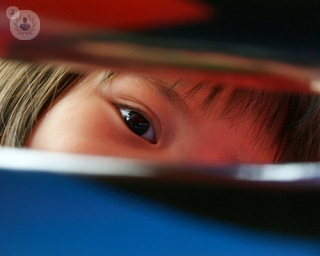

Crossed-eyes: can they be fixed? Strabismus explained
By Mr Imran Jawaid
2024-11-21
Children will often cross their eyes to have fun and be silly, but for some children (and even adults), having crossed eyes can be something they can’t help or control. The medical term for this is known as strabismus and it is described as when both eyes are not fully aligned and working together. Mr Imran Jawaid a leading refractive eye surgeon and expert in treating strabismus, explains what it is, the different types, and the treatments available. See more
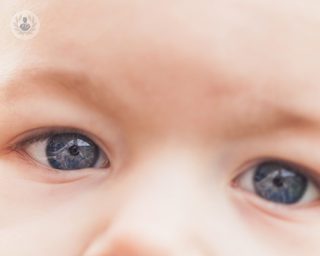

Lazy eye: an expert’s guide to ambylopia
By Professor Saurabh Jain
2024-11-21
A lazy eye (known by the medical term “amblyopia”) is a relatively common condition. It is thought to affect about 4% of people. It tends to manifest in childhood and can reduce the child’s vision in one eye. Expert ophthalmologist Mr Saurabh Jain explains what causes a lazy eye and how it can be treated. See more
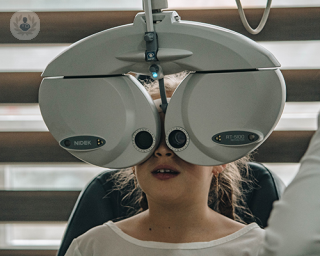

When should children have an eye test?
By Dr Annegret Dahlmann-Noor
2024-11-19
Having regular eye checks for your children is really important to ensure good eye health, as well as normal eye development. Dr Annegret Dahlmann-Noor, a top ophthalmologist, gives her advice on when parents should have their children's eyes tested. See more


What is a lazy eye? Amblyopia vs. strabismus
By Professor Saurabh Jain
2024-11-19
A lazy eye is a common problem that usually starts during childhood. However, there is some confusion among the general public as to what a lazy eye means. Expert ophthalmologist Mr Saurabh Jain is here to clear up any doubts as he explains the difference between two conditions: amblyopia and strabismus. See more
Experts in Amblyopia
-
Dr Annegret Dahlmann-Noor
OphthalmologyExpert in:
- Amblyopia
- Blepharitis
- Conjunctivitis
- Myopia
- Paediatric ophthalmology
- Strabismus (squint)
-
Professor Saurabh Jain
OphthalmologyExpert in:
- Paediatric ophthalmology
- Strabismus (squint)
- Amblyopia
- Watery eyes
- Blepharitis
- Cataracts
-
Miss Stephanie West
OphthalmologyExpert in:
- Paediatric ophthalmology
- Strabismus (squint)
- Diplopia (double vision)
- Amblyopia
- Botulinum toxin (Botox™)
- Cataracts
-
Mr Christos Moraitis
OphthalmologyExpert in:
- Neuro-ophthalmology
- Paediatric ophthalmology
- Amblyopia
- Myopia
- Optic neuritis
- Diplopia (double vision)
-
Ms Safina Rashid
Healthcare professionalsExpert in:
- Vision therapy
- Amblyopia
- Diplopia (double vision)
- Glaucoma
- Strabismus (squint)
- Headache
- See all

The Royal Free Hospital
The Royal Free Hospital
Pond Street, Hampstead. NW3 2QG
No existe teléfono en el centro.
By using the telephone number provided by TOP DOCTORS, you automatically agree to let us use your phone number for statistical and commercial purposes. For further information, read our Privacy Policy
Top Doctors

The Portland Hospital - part of HCA Healthcare
The Portland Hospital - part of HCA Healthcare
205 - 209 Great Portland St. W1W 5AH
No existe teléfono en el centro.
By using the telephone number provided by TOP DOCTORS, you automatically agree to let us use your phone number for statistical and commercial purposes. For further information, read our Privacy Policy
Top Doctors
-
The Royal Free Hospital
Pond Street, Hampstead. NW3 2QG, Central LondonExpert in:
- General Surgery
- Orthopaedic surgery
- Robotic Surgery
- Dermatology
- Obstetrics and Gynaecology
- Paediatrics
-
The Portland Hospital - part of HCA Healthcare
205 - 209 Great Portland St. W1W 5AH, Central LondonExpert in:
- Neurological spinal surgery
- Orthopaedic spinal surgery
- Maternity care
- Pregnancy
- Scoliosis
- In vitro fertilisation (IVF)
- Most viewed diseases, medical tests, and treatments
- Nutrition
- Genetic testing
- Minimal access surgery (keyhole surgery)
- Anxiety
- Long Covid
- Lifestyle medicine
- Botulinum toxin (Botox™)
- Functional medicine
- Stress
- Thyroid disorders
